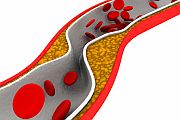For calculated LDL-C of 30 mg/dL, 95 percent confidence interval was 24 to 60 mg/dL
MONDAY, Aug. 10, 2015 (HealthDay News) — At lower values of measured low-density lipoprotein cholesterol (LDL-C), the variation and bias of calculated LDL-C increases, according to a study published in the Aug. 15 issue of The American Journal of Cardiology.
Noting that the Friedewald equation for calculation of LDL-C is the primary laboratory method for routine LDL-C measurement, Jeffrey W. Meeusen, Ph.D., from the Mayo Clinic in Rochester, Minn., and colleagues compared the accuracy and reproducibility of calculated LDL-C <130 mg/dL to LDL-C measured by β quantification (considered the gold standard). The comparison was conducted in 15,917 patients with fasting triglyceride concentrations <400 mg/dL.
The researchers found that at lower values of measured LDL-C, variation and bias of calculated LDL-C increased. For a calculated LDL-C of 70 mg/dL and 30 mg/dL, the 95 percent confidence intervals were 60 to 86 mg/dL and 24 to 60 mg/dL, respectively.
“Calculated LDL-C <30 mg/dL (0.8 mmol/L) should not be reported because of significant deviation from the gold standard measured LDL-C results, and caution is advised when using calculated LDL-CF values <70 mg/dL (1.8 mmol/L) to make treatment decisions,” the authors write.
Copyright © 2015 HealthDay. All rights reserved.








